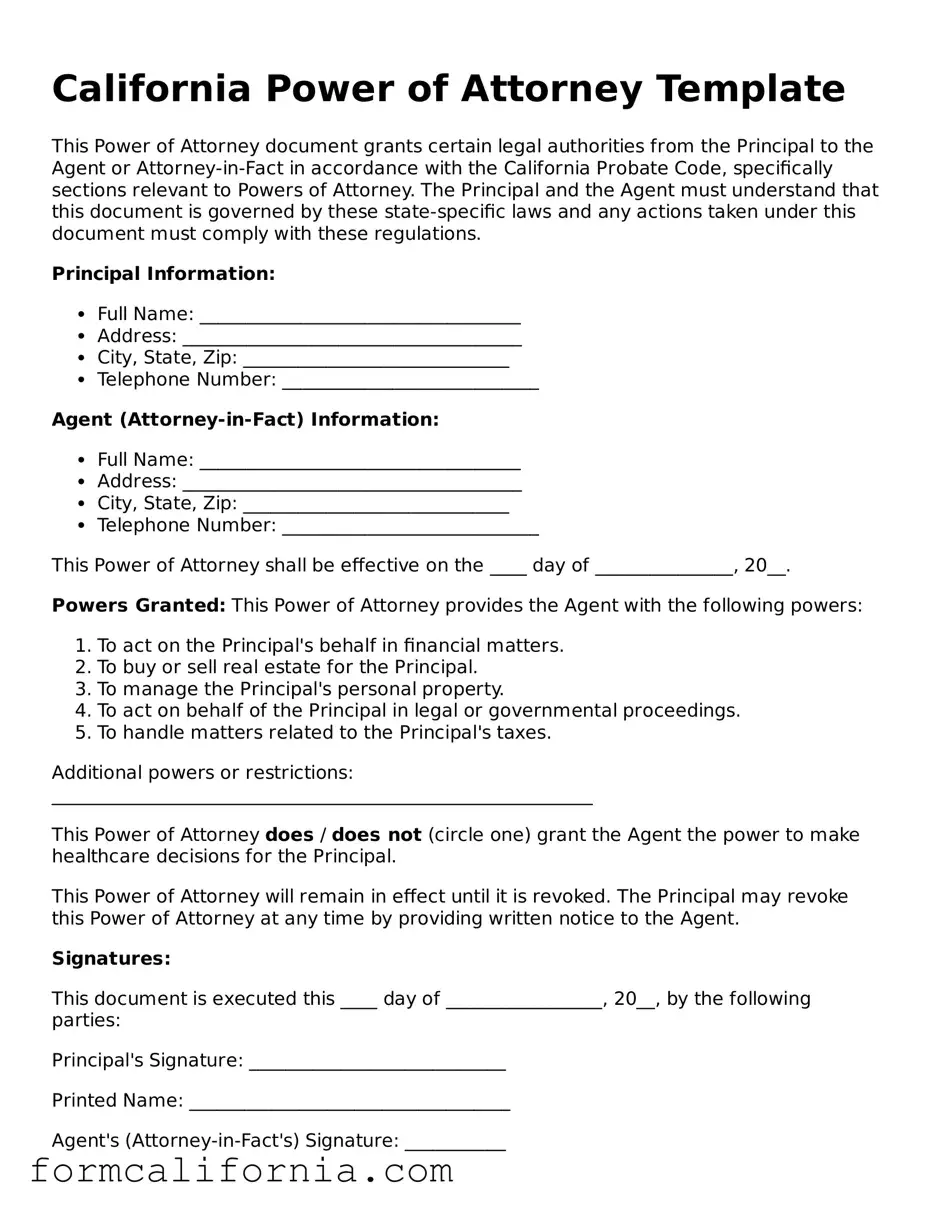California Power of Attorney Template
This Power of Attorney document grants certain legal authorities from the Principal to the Agent or Attorney-in-Fact in accordance with the California Probate Code, specifically sections relevant to Powers of Attorney. The Principal and the Agent must understand that this document is governed by these state-specific laws and any actions taken under this document must comply with these regulations.
Principal Information:
- Full Name: ___________________________________
- Address: _____________________________________
- City, State, Zip: _____________________________
- Telephone Number: ____________________________
Agent (Attorney-in-Fact) Information:
- Full Name: ___________________________________
- Address: _____________________________________
- City, State, Zip: _____________________________
- Telephone Number: ____________________________
This Power of Attorney shall be effective on the ____ day of _______________, 20__.
Powers Granted: This Power of Attorney provides the Agent with the following powers:
- To act on the Principal's behalf in financial matters.
- To buy or sell real estate for the Principal.
- To manage the Principal's personal property.
- To act on behalf of the Principal in legal or governmental proceedings.
- To handle matters related to the Principal's taxes.
Additional powers or restrictions: ___________________________________________________________
This Power of Attorney does / does not (circle one) grant the Agent the power to make healthcare decisions for the Principal.
This Power of Attorney will remain in effect until it is revoked. The Principal may revoke this Power of Attorney at any time by providing written notice to the Agent.
Signatures:
This document is executed this ____ day of _________________, 20__, by the following parties:
Principal's Signature: ____________________________
Printed Name: ___________________________________
Agent's (Attorney-in-Fact's) Signature: ___________
Printed Name: ___________________________________
Witness Signature: _______________________________
Printed Name: ___________________________________
Note: Depending on the powers granted in this document, a notarization may be required for this Power of Attorney to be legally effective.
